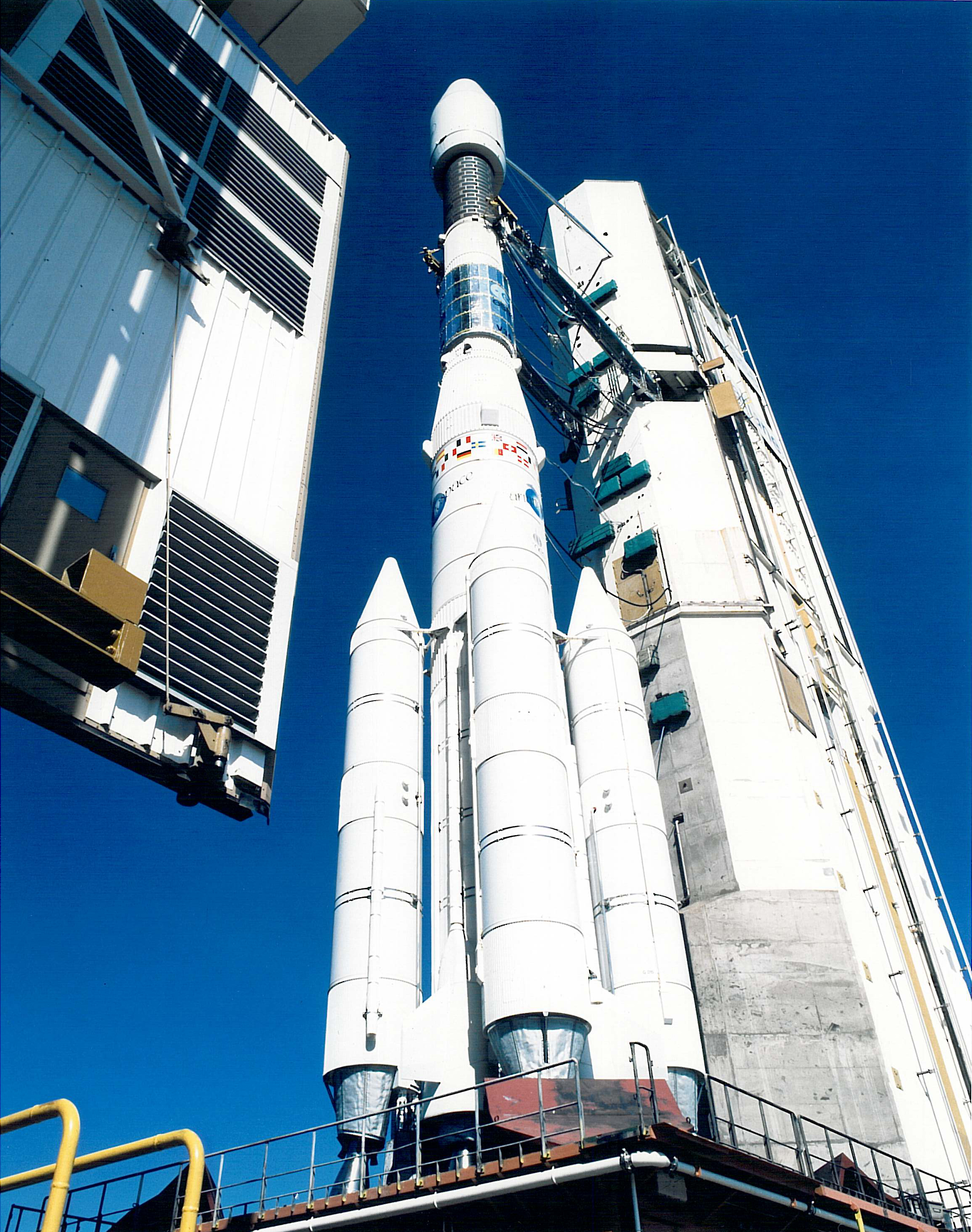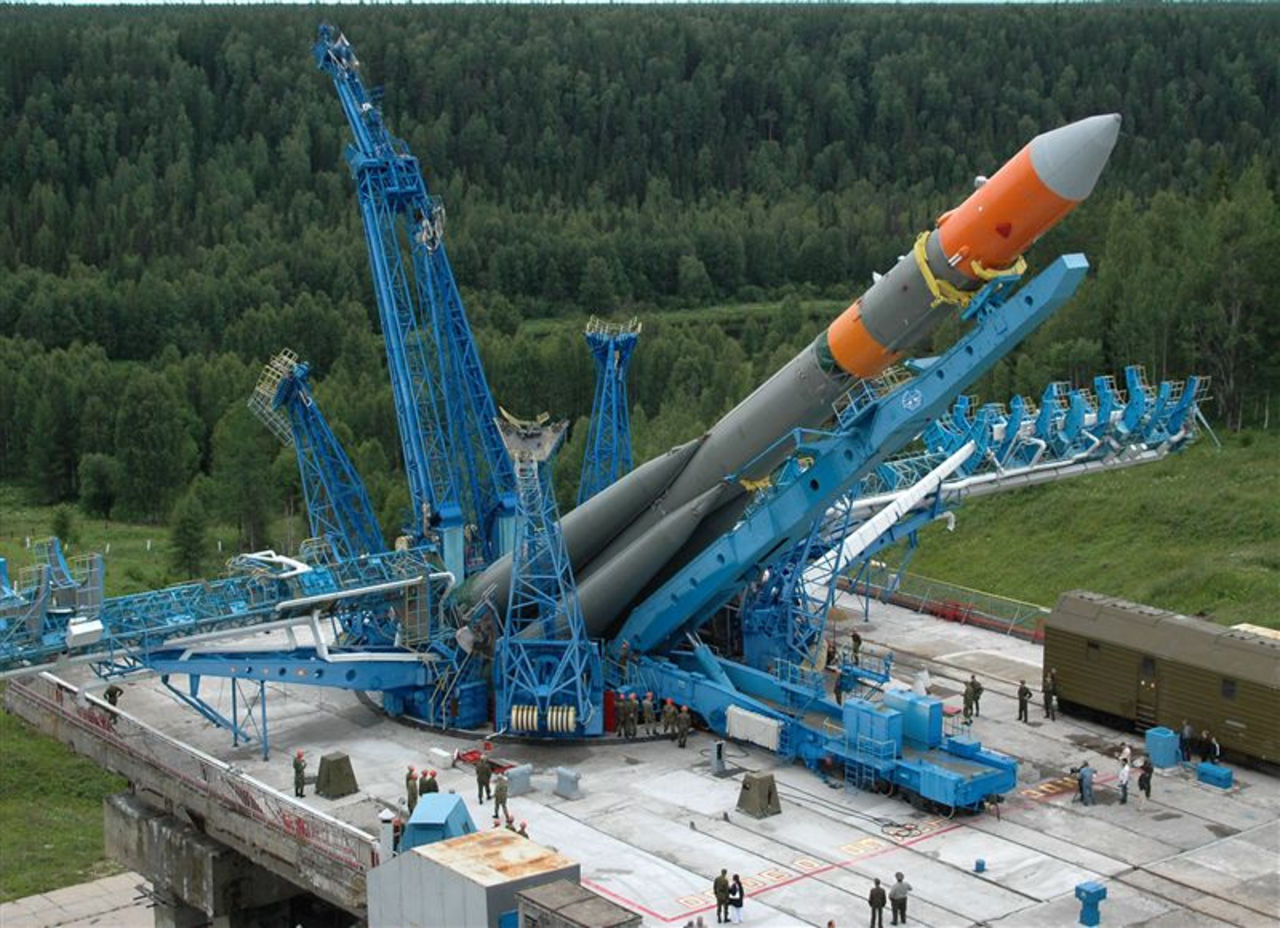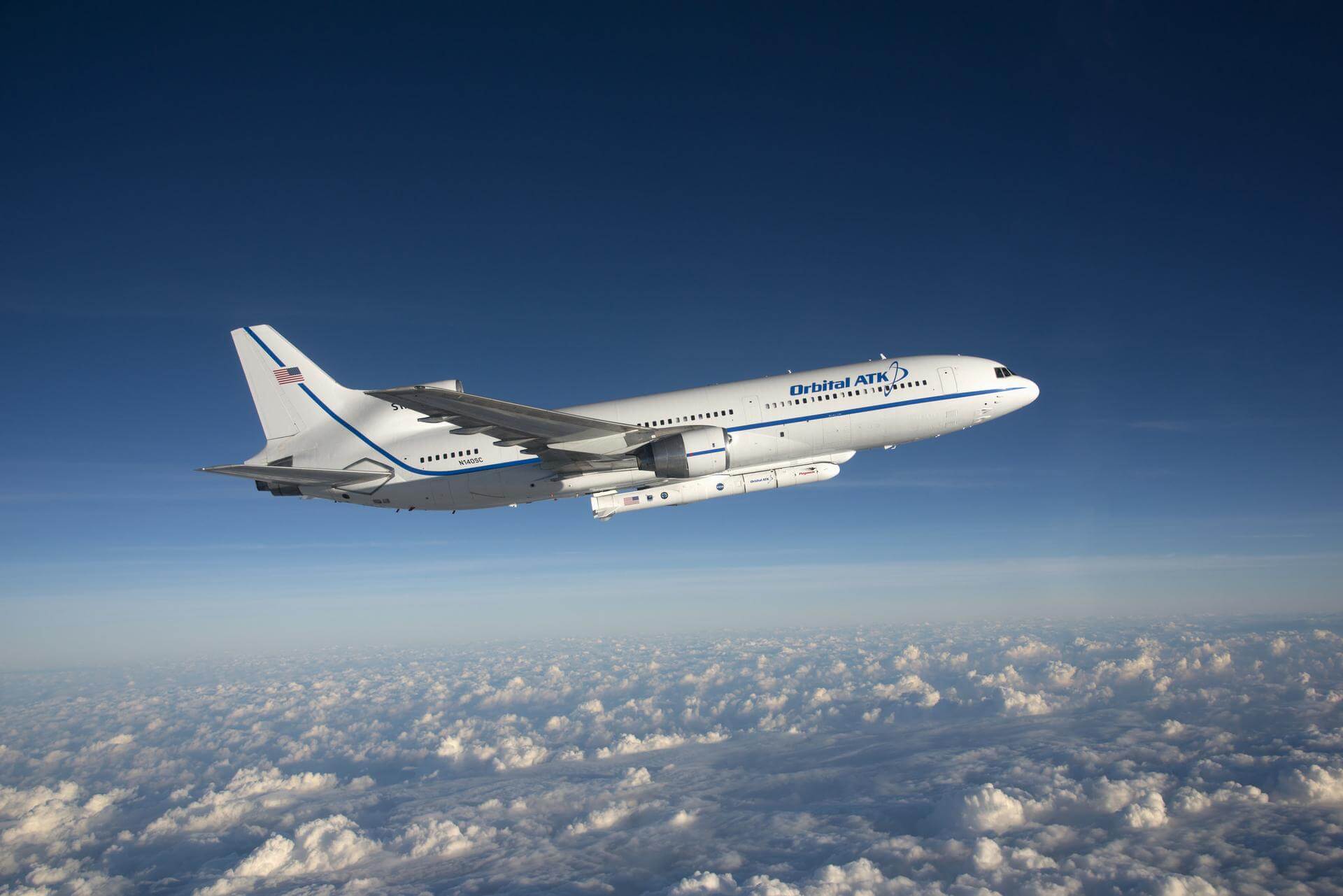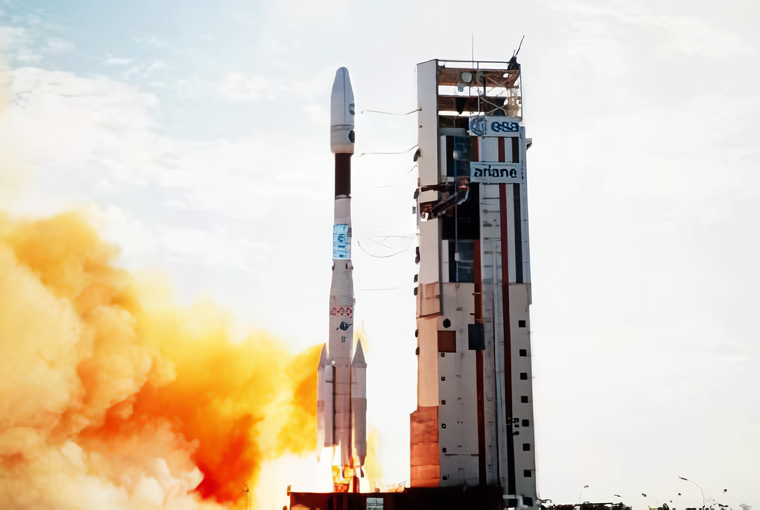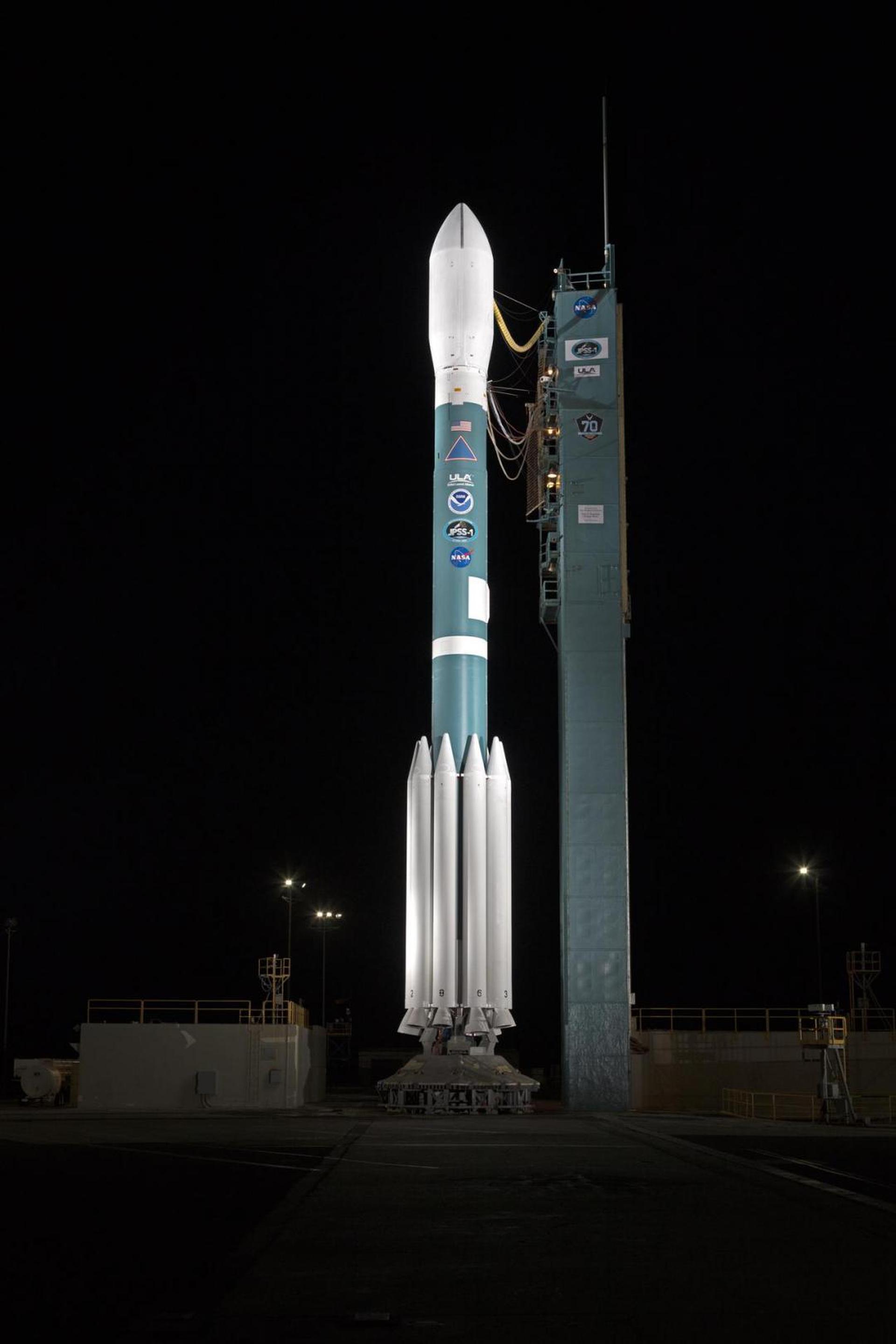Previous Spaceflight Launches
Filter by Agency, Locations or Vehicles
Show All LaunchesAriane 44L | Eutelsat W2 & Sirius 3
Aérospatiale | FranceGuiana Space Centre, French Guiana
Oct. 5, 1998, 10:51 p.m.
Status: Launch Successful
Mission:
The W satellites are designed to provide telecommunications services primarily over Europe (Eutelsat W2, W3 and W5) and communication services over Russia and Africa (W4). W2, W3 and W5 are designed to offer 24 transponders at saturation and W4 is designed to provide 31 transponders at saturation. The W satellites have a minimum operational lifetime of 12 years. The spacecraft are based on the Spacebus-3000B2 platform. Sirius 3 provides direct-to-home television services to the Scandinavian region. Hughes upgraded NSAB's satellite control center at Esrange, Kiruna, and provided training to the satellite controllers. Sirius 3 was successfully launched on an Ariane-44L H10-3 on October 5, 1998. The satellite was built at the Integrated Satellite Factory of in El Segundo, Calif.
Geostationary OrbitMinotaur | NROL-8
Orbital ATK | United States of AmericaVandenberg SFB, CA, USA
Oct. 3, 1998, 10:04 a.m.
Molniya-M | Molniya-1T 91
Russian Space Forces | RussiaPlesetsk Cosmodrome, Russian Federation
Sept. 28, 1998, 11:41 p.m.
Pegasus XL HAPS | Orbcomm-C1 - C8
Orbital Sciences Corporation | United States of AmericaAir launch to orbit
Sept. 23, 1998, 5:06 a.m.
Ariane 44LP | PAS 7
Aérospatiale | FranceGuiana Space Centre, French Guiana
Sept. 16, 1998, 6:31 a.m.
Status: Launch Successful
Mission:
Three of the most powerful broadcast satellites ever launched that are capable of direct-to-home (DTH) service are providing DTH programming to millions of consumers of PanAmSat. They were designed and built by Space Systems/Loral (SS/L).
Geostationary OrbitZenit-2 11K77.05 | Globalstar 5, 7, 9 to 13, 16 to 18, 20, 21
Yuzhnoye Design Bureau | UkraineBaikonur Cosmodrome, Republic of Kazakhstan
Sept. 9, 1998, 8:29 p.m.
Status: Launch Failure
Mission:
The Globalstar global mobile communications network offers global, digital real time voice, data and fax via a constellation of 48 minisatellites. The constellation operates in a 1410 km orbit inclined at 52 degrees, and will also have 8 spares. The satellites were built by Space Systems Loral and Alenia Aerospazio in Rome, Italy.
Low Earth OrbitDelta II | Iridium 77, 79 to 82
United Launch Alliance | United States of AmericaVandenberg SFB, CA, USA
Sept. 8, 1998, 9:13 p.m.
Status: Launch Successful
Mission:
Iridium provides global mobile telecommunications services using a constellation of 66 low earth orbit satellites in a 86.4° inclined orbit. Although 77 satellites were originally envisioned for the system and spawned the name based on the 77th element in the periodic table, the system has been scaled back. Motorola's Satellite Communications Group designed and manufactured the Iridium satellites with Lockheed Martin providing the LM-700A spacecraft buses.
Low Earth OrbitPaektusan 1 | Kwangmyongsong 1
Korean Committee of Space Technology | North KoreaTonghae Satellite Launching Ground
Aug. 31, 1998, 3:07 a.m.
Status: Launch Failure
Mission:
Thir first attempt to launch a North Korean satellite ended in vain, as the third stage of the Pekdosan-1 (a.k.a. Taepodong-1) launch vehicle failed shortly before it reached orbital velocity. Kwangmyŏngsŏng 1 would have beamed propaganda songs from space, if it had reached a stable orbit.
Low Earth OrbitProton-K/DM-2M | Astra 2A
Khrunichev State Research and Production Space Center | RussiaBaikonur Cosmodrome, Republic of Kazakhstan
Aug. 30, 1998, 12:31 a.m.
Delta 8930 | Galaxy 10
Boeing | United States of AmericaCape Canaveral SFS, FL, USA
Aug. 27, 1998, 1:17 a.m.
Status: Launch Failure
Mission:
Galaxy 10, a Hughes HS-601HP satellite, would have joined PanAmSat's fleet of dual-payload spacecraft serving the United States. It was the first satellite to be carried on the new Boeing Delta-8930 rocket. The launch occurred on 26 August 1998, but the satellite was lost when the Delta-8930 failed.
Geostationary Orbit